For most gardeners, it is vital to maintain a beautiful and weed-free lawn because weed build-up is one of the most troublesome issues. Therefore, if you notice clumps of grass in your yard, which grow quickly and don’t suit the rest of your lawn, you can encounter this problem.
In general, popular weed grasses forming in most gardens are dallisgrass and crabgrass. However, both types share some similarities, which are difficult to distinguish for beginners.
Thus, this post offers you a thorough dallisgrass vs crabgrass comparison to help you identify each kind and learn strategies to remove them.
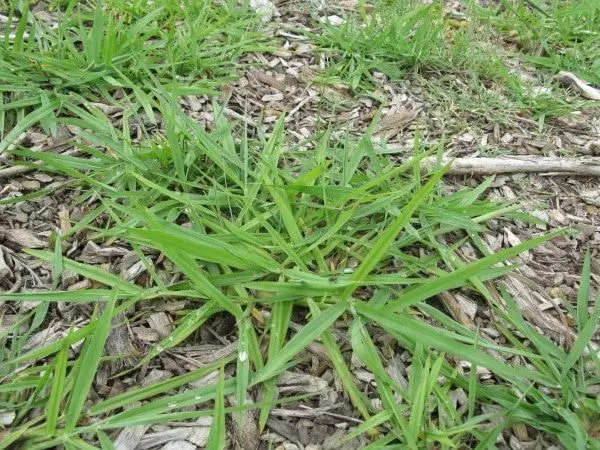
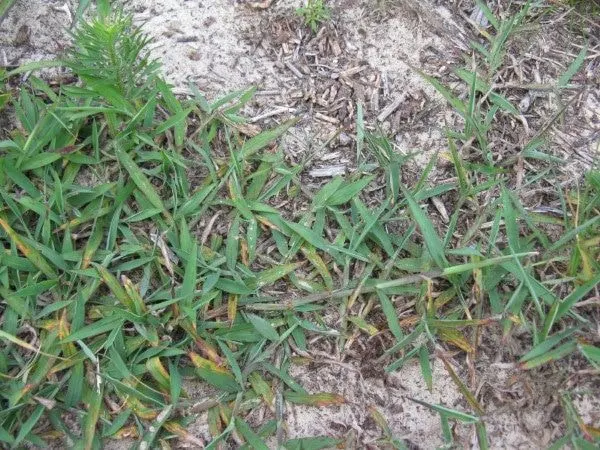
Overview Of Dallisgrass And Crabgrass
1. What is dallisgrass?
The dallisgrass weed, scientifically known as Paspalum dilatatum, comes from Uruguay and Argentina. It is a clumping and coarse grass, spreading from thick and short rhizomes. In addition, it was used as a quick-growing forage plant, which was introduced into the United States around the 1800s.
Clumps of dallisgrass are thicker and sharper than other kinds of weed grass. Therefore, it is essential to cut them in time because they will grow up quickly up to 4 feet in height. On the other hand, it has grayish-green color and hairs, growing on the base of the leaf blade and the leaf collar.
Although dallisgrass is considered a grass weed and an undesired plant in lawns, some cattlemen use it as pasture grass. Besides, because this grass grows so fast under nitrogenous fertilizers, it is identifiable by circular clumps with narrow and long seed heads linked at the tops between mowings.
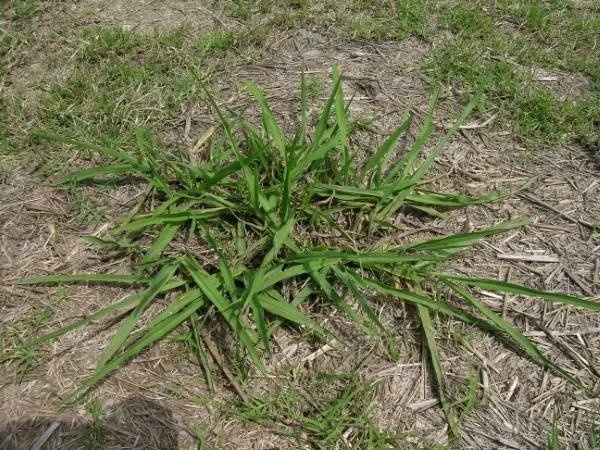
2. What is crabgrass?
The seedling of crabgrass resembles a small corn plant. This weed grass also has circular clumps, which grow outward in an approximately star-shaped pattern. When it grows, crabgrass spreads through new grass shoots, developing away from the center of the clump.
Crabgrass is the popular name for a genus of plants called Digitaria, containing perennial and annual grasses. In general, this weed grass has flat and wide blades and creates many seeds and long flower clusters every growing season.
Crabgrass and dallisgrass are invasive and stiff grasses, challenging to control if not properly removed. Moreover, many avid gardeners avoid adding harsh chemicals in their gardens since some herbicides can kill other desirable grass varieties. As a result, it is advisable to cut them before they have begun popping up.
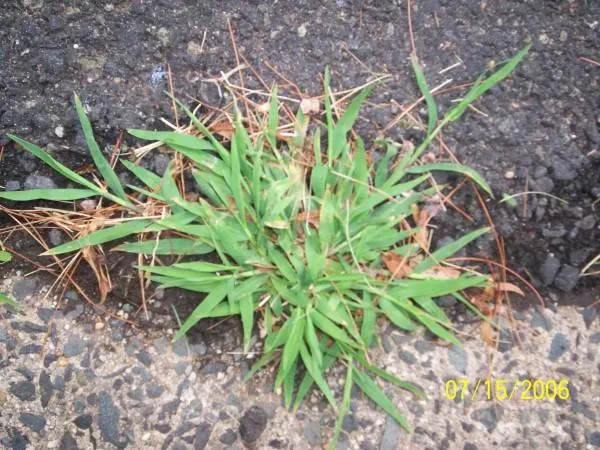
7 Main Differences Between Dallisgrass Vs Crabgrass
Although weed grass can grow in residential zones, orchards, gardens, and vineyards, each type shares specific features. As a result, let’s check out some major differences between dallisgrass vs crabgrass.
1. Soil types and temperatures
Soil kinds are one of the most significant features to consider when identifying these grasses. Specifically, dallisgrass thrives in heavy clay and sandy soils, while crabgrass prefers sandy compact soil.
On the other hand, dallisgrass seeds emerge in summer and spring when soil temperatures range around 65°F. Once grown, the new clumps germinate in temperatures of up to 90°F. Besides, the rhizomes quickly adapt and develop in wet zones like drainage.
Meanwhile, crabgrass grows within 5 days when the temperature remains constant, around 55°F. It also prefers hot, dry summer and dies off during cold conditions.
2. Texture and leaf-blade width
Dallisgrass has a coarse and clumping texture, which grows as a sturdy and circular clump. Due to the stiff and sharp texture, walking on this grass can be troublesome for children. On the contrary, crabgrass emerges in a star-shaped pattern.
In addition, leaf-blade width is another primary difference between these weed grasses. Leaf-blade width of dallisgrass is from ¼ to ½ inch while that of crabgrass is from ⅖ to ½ inch.
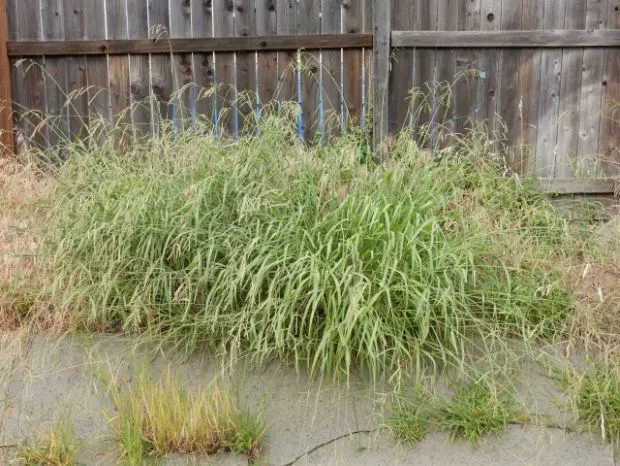
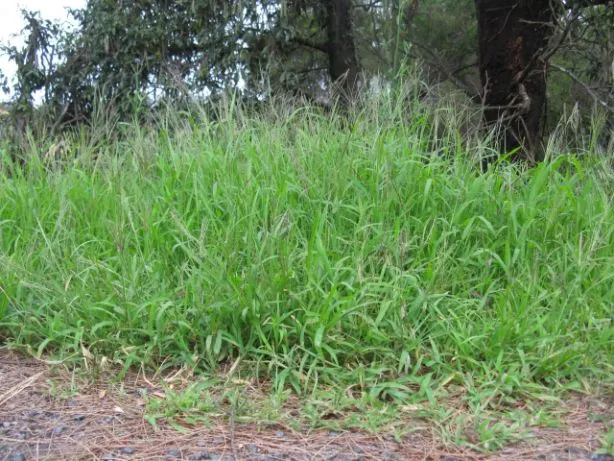
3. Weed management
When it comes to weed management, dallisgrass is more challenging to manage than crabgrass because it will grow back from its root system every year. Dallisgrass can grow quickly from the seeds, clumps, and sods, making the elimination more complicated.
Once it emerges, it takes a long time and much energy to get rid of it. As a result, the most effective weed management is to pull out the dallisgrass. Then, it is best to let the root dry out to prevent any re-growth.
Meanwhile, crabgrass only germinates from seeds, leading to easier and quicker solutions. One of the well-known strategies is using a pre-emergent herbicide to target unwanted seeds before the shoot emerges.
On the other hand, the post-emergent herbicide is an excellent choice to apply if the seeds have already germinated. However, always read and follow the instructions carefully to observe the best result.
4. Advantages and disadvantages
Let’s look over some specific pros and cons between dallisgrass and crabgrass.
Pros
The most prominent advantage of dallisgrass is that over-seeding bare zones of the lawn can decrease new invasion from other weed grasses. On the other hand, crabgrass brings you more advantages because it does not harm your garden except being a nuisance. In addition, this grass can withstand heavy traffic.
Besides, it is straightforward to use pre-emergent and post-emergent strategies to remove the weeds quickly. Planting grasses is also simple because the seeds die during frosting conditions, and they have a short lifestyle.
Cons
Dallisgrass is easily infected by ergot fungus, one of the popular factors producing poison to livestock. Moreover, it creates unwanted and unappealing clumps, which is not ideal for growing in recreational places like golf courses.
Due to the quick adaptation of dry and wet weather, dallisgrass is more challenging to manage than other types. It also takes extensive energy and time to pull out each grass.
Meanwhile, crabgrass may create an unpleasant lawn, which decreases aesthetics. This weed grass overgrows and infests areas within your lawn. Besides, it is more difficult to mow because crabgrass spreads horizontally and lies lower to the ground.
5. Sun exposure requirements and climate conditions
Dallisgrass thrives in higher water content and proliferates even in harsh weather. Meanwhile, crabgrass prefers drought-like and sunlight conditions. When the weather is excellent, it emerges and spreads without control. The shallow roots suck in water droplets on your lawn quickly.
On the other hand, it is advisable to avoid light watering to decrease its dominance over your lawn. As a result, it is best to water your garden deeply until the ground soaks up a lot of water.
6. Dormancy period
Weed grasses adapt variously so as not to go extinct, and there is no exception with crabgrass. Specifically, crabgrass can be dormant for almost 3 years before the seeds emerge.
Meanwhile, dallisgrass seeds can stay dormant during winter or frosting conditions yet rapidly grow when the season changes and temperatures increase up to 60°F.
Thus, if you select to target seeds for removal, it is advisable to mow regularly to prevent the dallisgrass seeds from dropping into the soil.
7. Foot traffic
Crabgrass produces a close-knit and high foot traffic, which avoids mowing due to its low-lying nature. This weed grass develops with stems producing right from the center and extending over the ground. While the middle of crabgrass can die out, the stems continue going.
Meanwhile, dallisgrass is prone to create lots of foot traffic when it meets suitable requirements. Specifically, it thrives in sandy or clay soils in the summer. Moreover, it reproduces by seeds and super short rhizomes during warm conditions.
Dallisgrass Vs Crabgrass: Lawn Care Tips
One of the most valuable lawn care strategies is not to mow your lawn before using harsh chemicals. Moreover, do not water your lawn within a day after spraying.
Instead of applying herbicides, it is vital to dig up the weeds properly. Besides, water your garden deeply, fix your lawn damages to remove bare spots, and feed your lawn frequently with high-quality fertilizers.
Frequently Asked Questions
- What herbicide kills dallisgrass?
MSMA is one of the best herbicides for killing dallisgrass, yet it is restricted for commercial use. Besides, herbicides, including CMA used to the dallisgrass clumps every 3 weeks, can kill this dallisgrass without harming your garden.
On the other hand, some other effective chemicals depend on your timing of application and grass types. For instance, Revolver, Certainty, Monument 75 WG, and Tribute Total are excellent choices to treat warm-season grasses.
- When to apply a pre-emergent herbicide for best results?
According to most professional gardeners, it is best to use a pre-emergent herbicide in early spring to manage the growth of crabgrass. Since pre-emergent herbicide kills weed seeds when they begin to emerge, it is advisable to use spring pre-emergents when the soil temperature is around 55°F, over the space of 4 days.
In addition, the most suitable time to use a pre-emergent is March in the southern and April in the northern areas.
Conclusion
With this Dallisgrass vs Crabgrass comparison, we hope you can identify each type. Thanks to proper identification, choosing a weed management solution is quicker and more effective. Besides, it is vital to remove both grasses as soon as possible to keep your lawn beautiful.
Moreover, it is best to avoid mowing your lawn immediately after using herbicides. Thank you for reading. Don’t hesitate to share the article with your friends and relatives to gain more experience in removing those plants.
